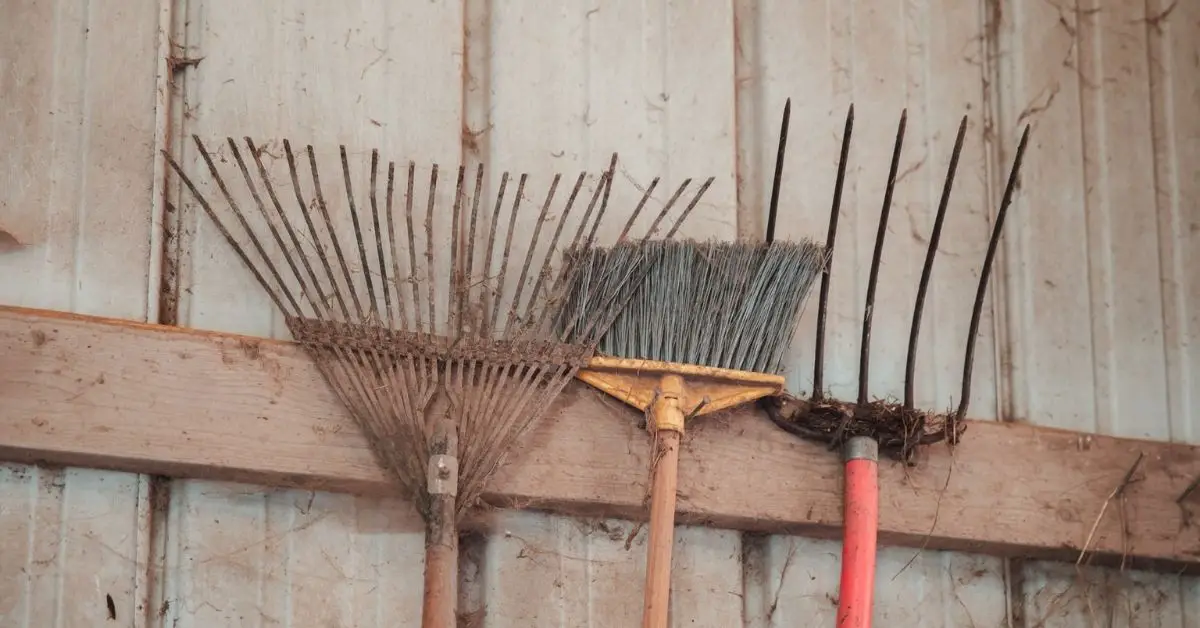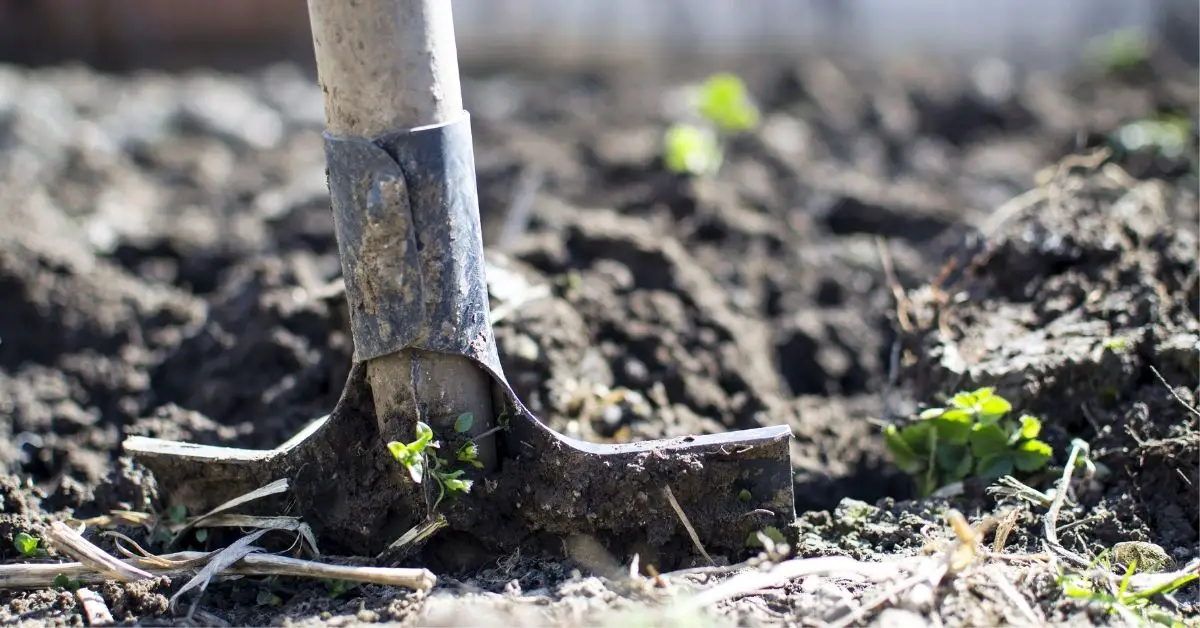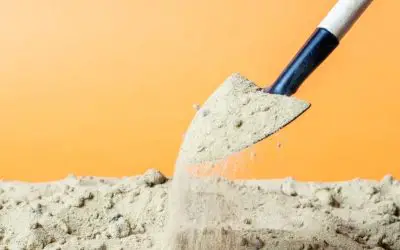Share

- Types of Rake
- 1. Lawn Rake
- 2. Grass Rake
- 3. Cultivator Rake (Aerating)
- 4. Cultivator Rake (Weeding)
- 5. Coal Rake
- 6. Drain Rake (Leveling)
- 7. Drag Rake
- 8. Grass Rake (Aerating)
- 9. Grass/Seeding Rake
- 10. Stone Rake
- 11. Tine Rake
- 12. Shrub Rake
- 13. Copper Rake (Garden Claw)
- 14. Pine Needle Rake (Lawn Sweeper)
- 15. Grass Hook Rake (Garden Hoe)
- 16. Hay Rake
- 17. Roof Rake
- 18. Concrete Rake
- 19. Thatch Rake
- How to Choose the Right Rake for Your Yard
- Tips On How To Care For Your Rake Properly
Rakes are one of the most common gardening and landscaping tools, but they are also one of the least understood. We will take a look at 15 different types of rakes in this blog post, so you can choose which type is best for your needs!
There are two categories of rakes: landscaping rake and garden rakes. Landscaping rakes are heavier and have longer, more widely spaced needles. Garden rakes typically have shorter needles with a smaller gap between them.
Types of Rake
Rake comes in different sizes, shapes, and materials. There are so many types of rake available in the market that you can easily get confused with all those options to choose from.
1. Lawn Rake
This kind of rake is also known as a leaf rake. This kind of rake has many uses, such as it can be used for removing leaves, grass clippings and other loose debris from your lawn or garden surface. You can use it to remove the old mulch that you want to replace with a new one in landscape beds.
2. Grass Rake
Grass rake is used for dethatching, leveling out high spots in the lawn, and clearing away thatch. It also helps to distribute grass seed or topsoil evenly on your lawn. You can use it when you want to extend the turf area by covering new ground. The sharp metal teeth pull up weed roots while cutting through dead surface material at the same time.
3. Cultivator Rake (Aerating)
This kind of rake has one large rectangular head with four prongs, usually made of wood or plastic attached perpendicularly to a long wooden handle. T
here are several aeration holes around this tool’s inch-wide head; three inches deep spaced about an inch apart from each other. This is a great tool for loosening compacted soil that has been baked by the sun, making it easier to grow grass or plants.
4. Cultivator Rake (Weeding)
It is also known as a weed rake because of its small head with many teeth in which you can easily remove weeds from lawns and between cracks on patio stones without damaging your yard’s topsoil layer.
You don’t have to bend over when using this kind of garden tool anymore! They effectively remove pesky dandelions, thistle, and other stubborn perennial weeds from your landscape beds.
5. Coal Rake
This rake type consists of two prongs attached perpendicular to the wooden handle; one long prong is made into an L-shape and another shorter prong attached to the long one. They are usually made of steel or aluminum with various numbers of tines for different uses that you need these garden rakes.
A coal rake is a great tool for leveling out soil after it has been worked by shovel, hoe, or spade before planting seeds in your vegetable beds. It also helps to level any hard surface areas like patios, walkways, and driveways so they look nice and uniform compared to bumpy, uneven ones without using power equipment such as a rototiller.
6. Drain Rake (Leveling)
This kind of rake consists of two rectangular heads connected perpendicular to the wooden handle, one short head at 90 degrees from a long straight head with a flat edge.
The rectangular heads are usually made of steel or aluminum with different tines depending on how heavy the leveling project you need to complete using these garden rakes.
A drain rake can also be called a screed. It’s perfect for leveling out areas where you want to place paving stones in your landscape beds and filling remaining spaces between them before pouring asphalt or concrete over them.
It is an ideal choice when shortening old brick walkways by removing one layer after another so they will all have the same height again, which makes walking around much safer without tripping accidents happening too often!
7. Drag Rake
Drag rakes are used for grooming golf greens, fairways, football fields, and other sports surfaces because of their sharp metal prongs that cut into the ground and pull up unwanted debris in a single swipe. They are great for removing dead grass from your lawn, too!
8. Grass Rake (Aerating)
This type of rake has one large rectangular head with four prongs, usually made of wood or plastic attached perpendicularly to a long wooden handle.
There are several aeration holes around this tool’s inch-wide head, three inches deep spaced about an inch apart from each other. This is a great tool for loosening compacted soil that has been baked by the sun, making it easier to grow grass or plants.
9. Grass/Seeding Rake
It helps you bare spots on your yard with loose topsoil layers from grass to the soil. This kind of rake is a lightweight tool with many thin, flexible tines attached perpendicular to a long wooden handle, usually made of aluminum or other light metal.
The head size can be up to 12 inches wide, and the length should match your height so you can work standing upright without bending over too much while using this gardening tool.
Grass/Seeding rakes are great for spreading the seed evenly across an area that needs reseeding because it has finer teeth than lawn rakes that help distribute seeds more gently into surrounding spots where they land on bare ground instead of just dropping them off at one location together in clumps and piles!
10. Stone Rake
Stone rakes are usually made of steel or aluminum with a wooden handle and have one long prong which is flat on the bottom side. They get their name from how it looks like an old-fashioned coal rake, but they’re used for cleaning stones instead of leveling out hard surfaces before pouring asphalt!
11. Tine Rake
It has several metal tines connected perpendicularly to a short, stiff wooden pole about four feet tall; often made of ash wood because of its ruggedness when using this garden tool in rugged landscape beds with lots of debris gets stuck under shrubs and among rocks.
A Tine rake can also be called a zigzag rake since these sharp teeth create deep straight lines along your walkway paths when raking them clean. This tool removes debris like small twigs, leaves, and other bits of rubbish mixed into surface soil after raking lawns because this rake has much shorter teeth than the grass/seed one!
Most tine garden rakes have six to ten sharp metal tines attached along its head spaced about an inch apart from each other, depending on size. It also helps to level any hard surface areas like patios, walkways, and driveways so they look nice and uniform compared to bumpy, uneven ones without using power equipment such as a rototiller.
12. Shrub Rake
Shrub rake is also called shrub hoe because its sharp metal teeth are perfect for removing weeds and trimming grass growing around flowerbeds and between rocks. It can be used to carve out curves along the edges of your lawn where you want it to look more natural instead of lined up in straight lines like on a football or baseball field!
13. Copper Rake (Garden Claw)
This gardening tool has one large rectangular head with six tine claws at the bottom side; attached perpendicularly to a long wooden handle that’s about five feet tall so taller gardeners don’t have to bend over much while using this pole-like gardening tool.
The copper garden claw was made especially for mulch lovers who enjoy working their way into flowerbeds from all angles with this tool because of its six sharp claws that can penetrate any mulch, wood chips, or other composting material that’s used to beautify your garden beds.
It helps you dislodge all kinds of debris like stones and twigs mixed into the soil around flowers without damaging roots! It also works great for making pathways through high grassy areas where weeds grow since it won’t pull out newly planted lawn seedlings by their roots which rake tines will do if they catch them while using this claw-like gardening tool at different angles than traditional rakes are capable doing.
14. Pine Needle Rake (Lawn Sweeper)
This is a lightweight tool made mostly for clearing away fallen pine needles, leaves, and other debris on your lawn all at once instead of having to rake them up separately.
It’s made with a long wooden handle attached perpendicularly to the head which is usually about twelve inches wide but can be smaller for storage purposes while not in use or it’ll take up too much space during winter months when shed out of sight until spring arrives!
This garden tool has one large rectangular metal cup-like head that’s lined inside with several rows of teeth around its perimeter; perfect for scooping away any kind of dry fallen plant material from grassy areas without scratching it like some leaf rakes will do if they have sharp edges on their tines.
15. Grass Hook Rake (Garden Hoe)
This is a gardening tool is for removing large amounts of long grass where it’s too tough to cut with a lawnmower or weed wacker by hand.
It has one sharp blade at the end, which folds up when not in use but extends outwards from its handle while being used as this garden hoe scrapes away any tall weeds growing along edges, sidewalks and driveways without damaging them, unlike regular rakes will do!
Its coarse teeth are made especially for clearing the dirt away from stones and rocks without hurting them like shovels or spades will do if their sharp edges touch the stone’s surface while removing it.
16. Hay Rake
This gardening tool is perfect for removing hay or other types of cut grasses quickly without any damage, which can happen with regular rakes if they’re used to clear away large areas where tall grassy weeds are growing. It has five long metal tines attached perpendicularly to its wooden handle so it doesn’t take up much storage space when winter comes!
It’s excellent at collecting small particles of hay hidden in the soil around flower beds and gardens since it works faster than leaf rakes but does not scratch them like some lawn sweepers do when using their claw-like head tools on dirt surfaces. The broad rectangular head of this rake allows you to easily rake up fallen leaves and pine needles on the grass.
17. Roof Rake
This gardening tool is ideal for clearing away any debris from the roofs of homes and garages during autumn months because it has a very long wooden handle to reach high areas without having to ladder up.
Its wide metal head works great at picking up all kinds of leaves, twigs, and other dried plant material so you won’t have to climb down your roof just so go through them one by one as if they were pieces in some kind of puzzle!
It also helps clean out gutters too while using this rake on their steep inclines, which will prevent water from overflowing into your house after heavy rains but its main purpose is for cleaning off those stubborn piles of dead organic matter stuck along rooftops caused by falling autumn leaves everywhere.
18. Concrete Rake
This is a gardening tool that’s made of very heavy-duty metal and has six long tines attached perpendicularly to its wooden handle, so it doesn’t take up much storage space when winter comes! It’s also tough enough to knock down any dried leaves on the ground around flowers beds, bushes, and garden areas without ruining them.
Its wide rectangular head makes short work raking away stubborn piles of dead plant material stuck on sidewalks or driveways during autumn months caused by falling leaves everywhere because, unlike regular leaf rakes, this one won’t have sharp edges which will damage surfaces if they’re used for sweeping large amounts of dirt covered with grass clippings mixed in too after mowing your lawn.
19. Thatch Rake
This is a gardening tool that has long sharp metal tines that attach perpendicularly to its wooden handle so it doesn’t take up much storage space when winter comes!
It works great at removing any dried grass or weeds growing among flowers, bushes, and other types of plant material because the sharp edges on either side will cut through them quickly without damaging these areas. But its main use is for cleaning out piled-up organic matter stuck in garden beds where leaves are mixed with twigs, pine needles, and other small pieces throughout autumn months caused by falling everywhere.
This rake can also be used along concrete surfaces like sidewalks where traditional leaf rakes won’t work as well because they’re not designed for scraping debris off harder surfaces, but their heads are too small for this job so it’ll take you longer to finish the job.
How to Choose the Right Rake for Your Yard
When choosing a rake for your yard, there are a few things you’ll want to look for in order to get the most out of it.
The Length and Weight
Choose a rake that’s the right length to reach all areas you’ll need it in and has a weight that won’t tire your arms out too soon.
The Head Size
Choose one with a head big enough for what you want it to do but not so large that it becomes difficult maneuvering around tight corners or flower beds because smaller heads are easier to manage when raking leaves off bushes, flowers, and other kinds of plant debris.
Handle Type & Grip Material
Look at its handle type closely because different designs will determine how easy or they are going to be pushing and pulling on it and what kind of grip material is used to wrap around its handle, so you don’t slip while using this tool.
The Material Used for the Head
Look closely at the metal head because different types will determine how long it’ll last before needing repairs or replacement over time if they become dulled from constant use too quickly without proper maintenance beforehand, which can save you a lot of money. In repair bills later down the road!
Some heads are made out of plastic instead but be careful with them because they’re not designed to pick up heavy loads like leaves that often end up breaking these cheaper models easily, especially during colder months when they’re brittle enough already after each frost and freeze cycle throughout winter.
Here’s additional information to know what rake should you use:
Tips On How To Care For Your Rake Properly
Even though a rake is designed to last for years after you buy it, there are some ways on how to care for one properly so it’ll continue doing its job without any problems.
Clean It Thoroughly After Each Use
Take your time and clean your rake as well as possible before putting it away by washing off dirt or debris that’s stuck into the metal head because if left alone long enough, this can cause rusting, which will damage the surface of these areas over time too!
Once rinsed thoroughly, dry both surfaces completely with a rag afterward and store them separately in their own storage space until the next season rolls around again when they’re ready to be used once more! If done right each year during autumn months especially, your rake will keep on working just as well for years to come without having to fork out more money anytime soon afterward.
Every Year Before Storage
Before putting it away before winter arrives, apply some kind of rust inhibitor or metal protectant wax over the entire head thoroughly with a rag first, and let this coat dry into its surface completely before storage!
This can help prevent any potential damage from happening that could end up costing you even more money during next autumn season when they’re needed each year again after months off in between depending on how much use these tools actually get throughout colder weather, too, which is why doing this during springtime ends up saving yourself time and frustration later on down the road instead if proper maintenance was applied beforehand already.
Use A Rake Sharpener
If your rakes become blunt or nicked up at all without proper cleaning throughout autumn, use a rake sharpener after each month to help restore the blades back into their original shape again before storage!
This can save you money by purchasing new ones instead if these are no longer working correctly when comes a time during next springtime so don’t wait until they need replacing in order to get this done. You’ll be just fine if they’re still in good enough condition for another season, which is why preventative maintenance saves you more cash afterward.
Every Six Months Or So During Routine Care & Maintenance Schedule
After being stored away for months off in-between seasons, depending on how used it actually got during colder weather, reapply a thin layer of oil or lubricant over the entire metal head again to help restore its shine and luster back to life.
This helps prevent it from corroding during longer periods of time when not in use, so doing this will save you plenty of cash later on down the road instead of your rake ending up becoming rusty by taking it out too early before springtime comes around each year!



0 Comments